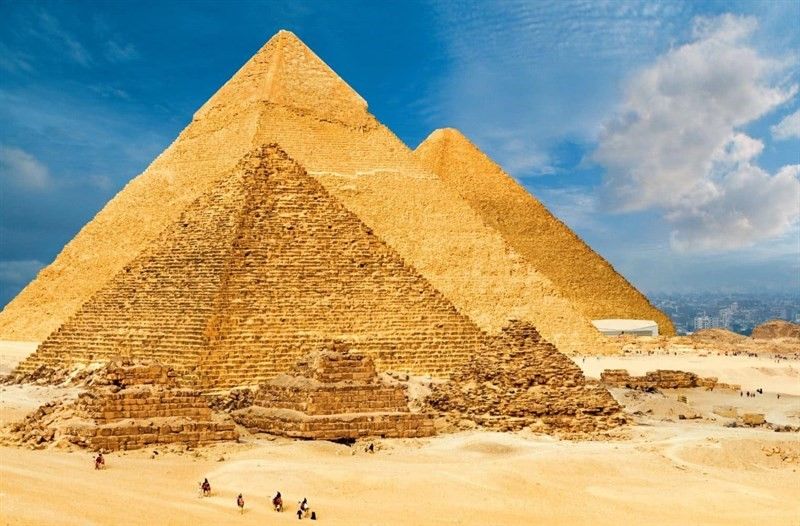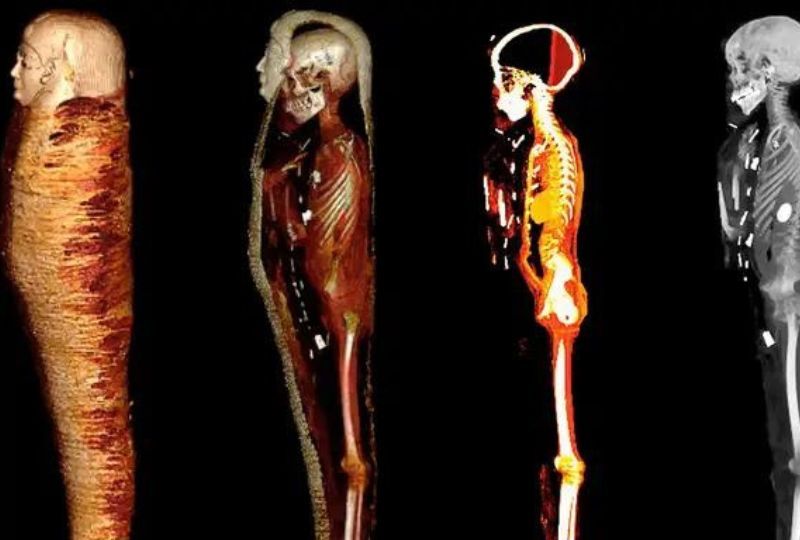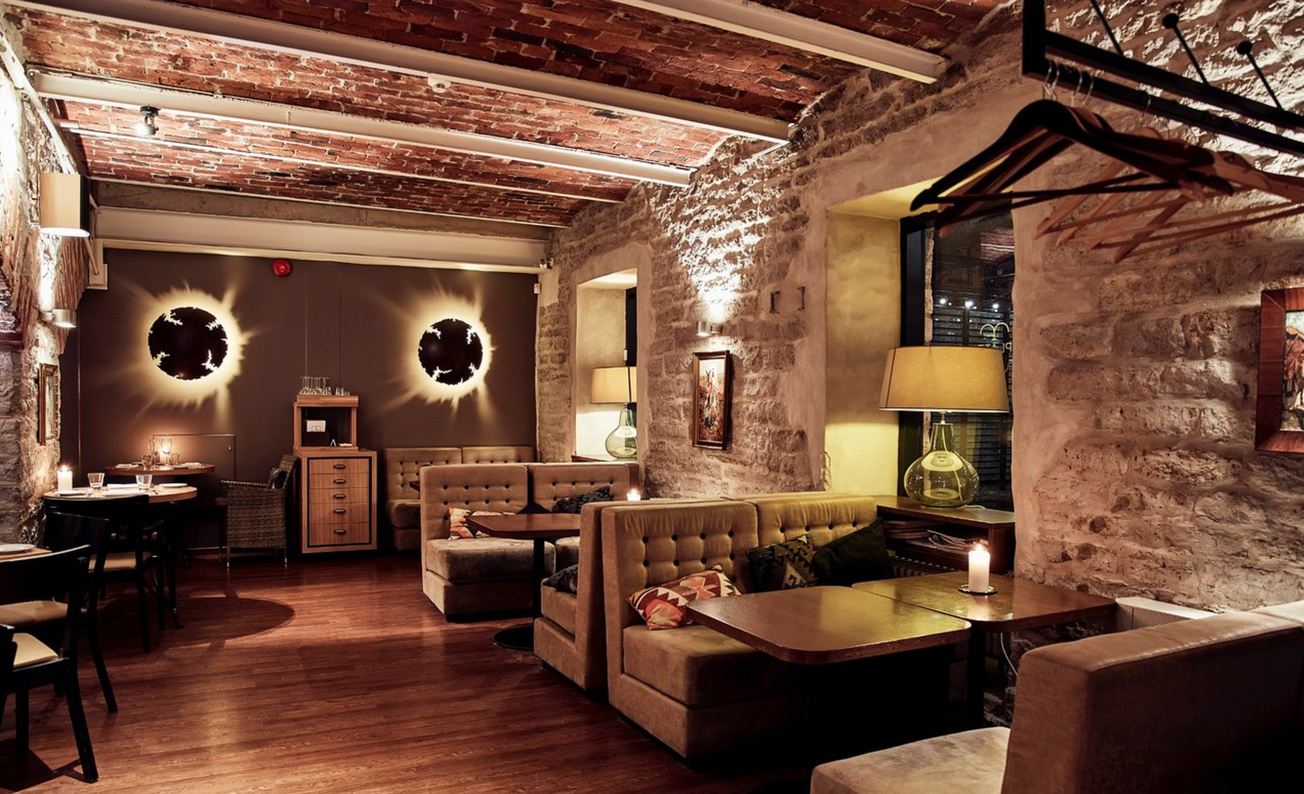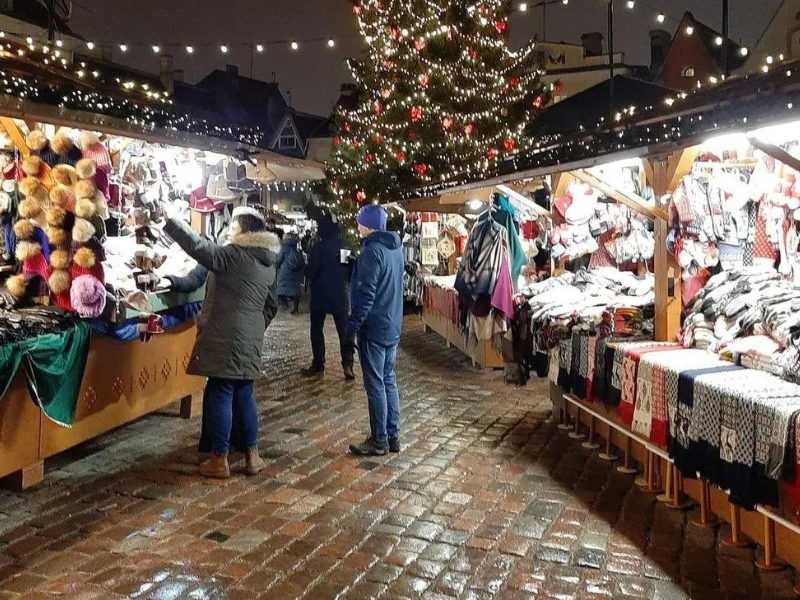One of the World's excellent megacities. As gorgeous as it is ridiculous, and as numerous in historic finery as it is half-broken, Cairo tends to be a city that tourists like and dislike incomparable treatments. Its large noise, contamination, and confounding traffic are an attack on your senses, however, look beyond the modern-day hubbub, and you'll find yourself in history that covers centuries. Filled with vitality, Cairo is where you get a feel for Egyptian street life. No journey to Egypt is complete without a stay in the city of Arabs called Umm al-Dunya (The Mother of the World). Discover the best areas to visit and amazing things to do in this buzzing city with our list of Cairo's leading tourist destinations.
1. Pyramids of Giza
The Pyramids of Giza are Cairo's primary half-day journey and a must-do tourist attraction on everyone's schedule. Right on the edge of the city, on the Giza Plateau, these fourth dynasty funerary temples have actually been intriguing tourists for centuries and continue to be amongst the country's substantial highlights. No matter the heat, the dust, and the traveler hustle, you can't lose out on a journey here.
The Pyramid of Cheops (likewise called the Excellent Pyramid or Pyramid of Khufu) is the Giza group's biggest pyramid. Its interior of narrow passages can be checked out. However, aside from a plain tomb chamber with an empty sarcophagus, there isn't much to see.
Straight behind the Great Pyramid is the Solar Boat Museum, which reveals amongst the ritualistic solar barques discovered in the area that has truly been fastidiously reminded of its original elegance.
Farther south on the plateau is the Pyramid of Chephren (likewise described as the Pyramid of Khefre), with an internal tunnel place, which can be gotten in. The smaller Pyramid of Mycerinus (Pyramid of Menkaure). Protecting these mortuary temples is the pharaoh-faced and lion-bodied Sphinx, one of the ancient world's popular monoliths.
When the Grand Egyptian Museum (GEM) is finally wound up, the Giza Plateau is set to invite another tourist attraction. When opened, it will be the most amazing museum worldwide committed to exposing the antiquities of a single civilization, showing a wealth of Ancient Egypt's artifacts that have actually never ever been seen by the public before. After a stop-start building and construction, beleaguered with financial problems, the museum opening date has been set for 2021.
The pyramid plateau is on the edge of Giza's rural sprawl, around 13 kilometers southwest of the central city. Many people get here by taxi; nevertheless, it's likewise offered by an easier-than-you-think combination of taking the city to Giza. After that, getting on a regional minibus that drops you outside the entranceway. As the pyramids' area is relatively large, various travelers choose to see the trip location. Among the most popular things to do at the pyramids is a camel journey. A terrific alternative for newbie visitors is the Personal Half-Day Journey to the Giza Pyramids with Camel-Riding. This includes pickup and drops at your hotel, a guide, lunch, and 25 minutes on a camel.
Address: Al-Ahram Street, Giza.
2. The Egyptian Museum
The certainly fantastic collection of antiquities shown in Cairo's Egyptian Museum makes it amongst the world's incredible museums. You would require a lifetime to see whatever on the program.
The museum was founded in 1857 by French Egyptologist August Mariette and relocated to its present home-- in the exceptional powder-pink estate in Downtown Cairo-- in 1897. Yes, the collection is incorrectly identified and not well set out due to space limitations (and merely a portion of its general holdings are actually on the display screen). It likewise suffers currently with some empty cases due to artifacts being moved to the GEM; nevertheless, you still can't help being impressed by the display screens' excellent majesty.
If you're pressed for time, make a beeline directly for the Tutankhamun Galleries. The treasures revealed here were all found in Tutankhamun's tomb, son-in-law, and follower of Amenophis IV (in the future Akhenaten), who died at the age of 18. The tomb, found by Howard Carter in the Valley of the Kings in 1922, consisted of the biggest and wealthiest assemblage of extensive items ever discovered undamaged in an Egyptian tomb.
Stresses include Tutankhamun's death mask and sarcophagi (Room 3), the pharaoh's lion throne (Space 35), and his intriguing closet collection (Space 9). In the future, do not lose out on a roam through the Egyptian valuable fashion jewelry collection (Location 4), that includes more bling than you'll ever see once again in one lifetime, and settle by visiting the Royal Mummies Collection (Area 56 & 46), where you can say hello to Hatshepsut, Tuthmosis II, Ramses II, and Seti I face to face.
Even when the GEM opens, this popular structure will still be utilized as a museum. It has actually not been exposed which collections will remain here and which will be moved-- except for the Tutankhamun Galleries, which will all end up being moved to the GEM.
The Egyptian Museum sits perfectly beside Midan Tahrir, the main square of Downtown Cairo. The most convenient method to show up here is to take the City to Sadat station (on Midan Tahrir) and follow the museum's exit signs.
Location: Midan al-Tahrir, Downtown
3. Al-Azhar Mosque
Al-Azhar Mosque is the finest building of Cairo's Fatimid period and amongst the city's earliest sustaining mosques, ended up in ADVERTISEMENT 972. It's likewise amongst the world's earliest universities-- Caliph El-Aziz bestowed it with university status in AD 988 (the other university vying for "earliest" status is in Fes), and today, Al-Azhar University is still the leading doctrinal center of the Islamic world.
The primary entryway is the Barbers' eviction on the northwest side of the structure, adjacent to the neo-Arab outdoors established by Abbas II. Leave your shoes at the entranceway and walk into the main backyard. To your right is the El-Taibarsiya Medrese, which has a mihrab (prayer specific niche) dating from 1309. You get attractive views of the mosque's five turrets from the primary backyard, which top the structure. Throughout the yard is the main prayer hall, covering a substantial 3,000 square meters. The front half originates from the preliminary structure, while Abd El-Rahman consisted of the rear half.
Al-Azhar Mosque is right in the heart of the Islamic Cairo district and easy to reach by taxi. Al-Azhar Street runs east from Midan Ataba in the downtown location right to the square where the mosque sits.
Address: Al-Azhar Street, Islamic Cairo District
4. Old Cairo (Coptic Cairo).
This little church-filled cluster of twisty laneways lies within the walls of Old Babylon, where the Roman Emperor Trajan initially developed a fortress along the Nile. Parts of the Roman towers still command the main street.
The Coptic Museum here makes up a wealth of details on Egypt's early Christian duration and is home to Egypt's finest collections of Coptic art. Next door, the 9th-century Hanging Church includes some stunning examples of Coptic architecture. Founded in the fourth century, the church was initially established over the Roman gate towers (hence the name) and was substantially rebuilt throughout the 9th century.
For lots of Christian tourists, though, a see to this district's authentic focus is the Church of St. Sergius and Bacchus, where regional legend states the Virgin Mary, child Jesus, and home safeguarded throughout King Herod's massacre of male kids. Farther into the quarter, you worry about the Ben Ezra Synagogue, which is specified to be built near the area where the baby Moses was discovered in the reeds. Just outside the quarter, you can also go to the Mosque of Amr Ibn al-As, the first mosque integrated in Egypt.
Coptic Cairo is most convenient reached by taking Cairo City to Mar Girgis station.
Location: Sharia Mar Girgis, south of Downtown.
5. Khan el-Khalili (Souq Quarter).
Khan el-Khalili is amongst the world's great shopping experiences. This Middle Eastern souq (exchange) is a labyrinthine collection of slim alleys established as a shopping district in ADVERTISEMENT 1400, which still sounds with the clang of metal staff members and silversmiths.
The primary streets have long ago offered themselves over absolutely to the traveler trade (with lots of inexpensive papyrus images and plastic pyramids on the display screen). Nevertheless, they divert off the main drag into the surrounding streets. The undesirable workshops and tiny shops are a few of the absolute finest areas to pick up conventional Egypt items. Here, you'll find whatever from antiques and stunning metal lampshades to in your location woven materials.
While here, drop in at Cairo's the majority of the well-known coffeehouse, Fishawis, where syrupy Arabic coffee and sweet tea are dispensed to travelers and local merchants alike at a rapid-fire pace.
The primary souq highway is Al-Muski Street (called Gawhar al-Qaid Street at its eastern end) for customers. The gold and silver workshops mainly collect on the north of this street's crossway with Al-Muizz Li-Din Allah Street, while the spice market area is merely to the south. The market is hemmed in on its eastern side by the Neo-Gothic bulk of the Sayyidna el-Husein Mosque, incorporated in 1792 to honor the Prophet Muhammad's grandson.
The entry to the Khan el-Khalili location is throughout the highway from Al-Azhar Mosque.
Location: Off Al-Azhar Street, Islamic Cairo District.
6. The Citadel.
In a commanding area at the Mokattam Hills foot, Cairo's castle was established by Saladin in 1176. The initial structure he set out has long disappeared except for the eastern external walls; nevertheless, a custom of rulers has actually made their additions here.
The Mosque of Muhammad Ali is the most widely known monolith and the primary element for checking out. Nicknamed the "Alabaster Mosque," its white stone and high, disproportionately slim turrets are among Cairo's exceptional landmarks. The other huge factor to come up here is the views across the city; head to the Gawhara Terrace for the best panorama in the area.
Merely to the northeast of the Muhammad Ali Mosque is the El-Nasir Mosque, built-in 1318-35 by Mohammed el-Nasir. A collection of rather half-hearted museums (the Cops Museum, National Military Museum, and Carriage Museum) uses up a few other structures. It is more worth seeing for the architecture of the actual structures instead of the exhibitions themselves.
You can walk to the citadel area from Bab Zuweila, if you're feeling energetic, by heading along Khayyamiyya Street. The walk takes about thirty minutes.
Area: Off Midan Salah-ad-Din, Islamic Cairo District.
7. Sultan Hassan Mosque.
Among the finest examples of Mamluk architecture in the world, Sultan Hassan Mosque is a vision of Arabic artistry with an abundance of stalactite detailing and intricate arabesque functions. It was integrated in 1356-63 for the Sultan Hassan el-Nasir.
The outside, with its significant areas of stone, is similar to an ancient Egyptian temple. The north corner's substantial primary entrance is almost 26 meters high, and the turret at the south corner is the greatest in Cairo at 81.5 meters.
The main entrance leads into a domed vestibule, beyond which is a little antechamber and a passage leading into the intricate open Court focused around an ablution water fountain. From here, an iron door leads into the sultan's mausoleum, where the stalactitic pendentives of the preliminary dome still endure. In the center of the chamber is the sultan's Casket.
Straight handling the Sultan Hassan Mosque is the El-Rifai Mosque, integrated in 1912 to house the burial place of Khedive Ismail and developed to recreate its older next-door neighbor. The ex Shah of Iran, Mohammed Reza Pahlavi (1919-1980), is buried here.
Both mosques rest on Midan Salah ad-Din, directly listed below Cairo's Castle.
Location: Midan Salah-ad-Din, Islamic Cairo District.
8. Museum of Islamic Art.
Extreme damage sustained from a car-bomb attack in 2014 led to this museum shutting its doors to the public for numerous years; however, the good news is it has actually now been reopened. Cairo's Museum of Islamic Art holds among the essential Middle Eastern artistry collections on earth. Ottoman tile work, Ayyubid ceramics, frescoes, delicately patterned wood-inlay, coinage, sculpted marble tombstones, and jewel-toned carpets are all other items on the display screen.
Invest some time browsing the brightened Qurans and the screens of highly ornamental ceramics, glassware, and metal-ware. Then proceed to admire the considerably fancy valuable fashion jewelry collection and the spaces devoted to Astronomy and other sciences, where you'll find extremely detailed astrolabes and other equipment. A go-to here is a journey through the breadth and wealth of Islamic heritage.
The museum rests on the edge of the Islamic Cairo district, so it's a great place to either start or ends a check out to the neighborhood. When you've crossed a hideously hectic primary street) to Bab Zuweila, it's within easy strolling distance (.
Address: Midan Bab Al Khalq, Islamic Cairo District.
9. Bab Zuweila.
Of all the Islamic Cairo district's gates, Bab Zuweila is the most intriguing. You can reach the top of this middle age antique (built in the 11th century) for some great roof views over Islamic Cairo. Eviction itself has 2 minarets and is the last southern gate of the old town still standing. Right next door is the red-and-white stonework of the Sheikh al-Mu' Ayyad Mosque. A number of steps farther away are the interesting artisan stalls of the Street of the Tentmakers, where Egypt's brilliant material used for wedding event occasions and other special occasions is sold in bulk.
Address: Al-Muiz li-Din Allah Street, Islamic Cairo District.
10. Al-Muizz li-Din Allah Street.
Al-Muizz li-Din Allah Street's northern location is rimmed by fantastic Mamluk buildings, which have actually been meticulously brought back to their former splendor. The Madrassa of as-Salih Ayyub, integrated 1247, is a display of Islamic architecture's relaxing simpleness.
Straight across the road from the madrassa is the glamorous Madrassa of Qalaun, appropriately considered among the Mamluk period's greatest architectural victories. It was finished in 1293 by Qalaun's kid, Muhammad al-Nasir, and has an interior jam-packed to the brim with complicated tile work, excellent marble, mother-of-pearl mosaics, and stained-glass windows. When it initially opened, Qalaun's madrassa likewise worked as a health center.
A little further north is the more youthful (integrated in 1309) Madrassa of An-Nasr Mohammed with lots of elaborate detailing to appreciate before coming to the fantastic Egyptian Fabric Museum with a collection covering the Pharaonic period right approximately the Islamic duration.
Address: Al-Muizz li-Din Allah Street, Islamic Cairo District.
11. Ibn Tulun Mosque.
The 2nd earliest mosque still standing in Cairo, Ibn Tulun Mosque, was developed in between AD 876 and 879 and modeled on the Kaaba in Capital (Saudi Arabia). At the time it was constructed, it was the most significant mosque around.
The Main Court's pillars have abundant enduring fragments of intricate frieze handle screen and open onto a series of narrow-fronted halls. The main prayer hall (on the southern side of the Court) still keeps pieces of its older sculpted stucco and wood design, and the mihrab here has remnants of its preliminary gold mosaic decoration.
On the northern side of the mosque is the 40-meter-high turret with an excellent horseshoe arch over the entryway and a spiral staircase swirling through the interior. It is modeled on the turrets of the Great Mosque of Samarra on the Tigris. There are exceptional views extending over the sea of homes to the north and the Mokattam Hills in the east if you climb the 173 actions up to its upper platform.
It's an easy walk from the Sultan Hassan Mosque to the Ibn Tulun Mosque, strolling directly down Al-Saliba Street.
Address: Al-Saliba Street.
12. Al-Azhar Park.
Constructed over what was essentially a midlife rubbish dump, Al-Azhar Park is the green lungs of the old district. It was opened in 2005 and provided a much-needed break to Cairo's street hustle's overcrowded chaos. Inside, the gloriously manicured gardens are a gorgeous place for an evening walk, especially as the views over the entire old city are spectacular from here at sundown. There are also several excellent dining establishments on-site, so it's the perfect location to put your feet up after a long day of sightseeing. The park is loaded, filled with regional households getting away the surrounding holler of traffic that cocoons Cairo's rest if you begin the weekend.
Al-Azhar Park is most rapidly reached by taking a taxi, but if you're currently in the Islamic Cairo district and it's not too hot, you can turn east onto Darb al-Ahmar Street from Bab Zuweila and walk to the lower park entrance.
Address: Salah Salem Street.
13. Zamalek.
The Nile island of Gezira is home to Zamalek's district and most of Cairo's arty boutiques and hipster dining facilities. Dating from the mid 19th century, the entire location has a significantly European feel to its architecture with broad boulevards rimmed by jacaranda trees and splendidly intricate Belle Époque estates (much of which are now home to different embassies).
Zamalek is Cairo's leading dining place; however, Gezira's southern tip likewise has a clutch of art galleries to check out. The Palace of Arts is housed in the Nile Grand Hall on the former Gezira Fair Premises and consists of a schedule of turning exhibits in its galleries. Surrounding is the Museum of Modern Egyptian Art, a fine collection of 20th-century Egyptian art, including works by Mahmoud Said and Mahmoud Mukhtar.
Much of Gezira's southern section is consumed by the special tennis courts and riding stables of the Gezira Sports Club, however towering above all the rich plant is the 187-meter-high Cairo Tower, integrated in 1961 by President Nasser. A trip up the observation deck at sundown to see sunset settle over the city is a must.
14. Nilometer.
Charming Roda Island-- just south of Gezira Island-- is home to Monastirli Palace, as soon as the Ottoman pasha's house. Inside the palace gardens, right at the island's southern idea, is Cairo's Nilometer, which was made use of to determine the ups and downs of the Nile and prepare for the yearly flood heights. Unlike the Nilometers you'll see in Upper Egypt (such as the making it through Nilometer on Elephantine Island in Aswan), this one is a much later structure, integrated ADVERTISEMENT 861.
Also in the palace premises is the small Umm Khalthum Museum, which celebrates Egypt's famous queen's life. Umm Khalthum (1898-1975) is the Arab world's precious songstress, and you'll hear her music everywhere you go in Egypt, blasted out onto the street from ahwas (standard coffeehouses) and on the stereo of nearly every taxi. Inside, the museum holds a collection of the vocalist's ownerships, including her wonderfully sequined phase outfits, and there's a remarkable black and white documentary on her life (with English subtitles).
Outside the palace, Roda Island's streets are pleasurable to wander and still have some shabby estate architecture of the early 20th century.
15. Manyal Palace.
The north end of Roda island holds the magnificently ornate Manyal Palace. After a detailed repair, which took numerous years, it has actually re-opened to the general public. The structures here are an eccentric riot of styles that cherry-pick influences from both basic Arabic and palatial European designs, resulting in an over-the-top, lavish symphony of interiors.
Have a look at the Reception Palace, where visitors were hosted, with its elaborate wood ceilings. After that, the Residential Palace with its Rococo flourishes, Ottoman-style tile work, and oil paintings. The Throne Palace, decked out in gold, is the real highlight here, though.
The complex was built in the early 20th century by the uncle of King Farouk. It's set within luxurious green gardens on the coast of the island.
16. Mosque of Al-Hakim.
Caliph Al-Hakim is one of the most fascinating rulers of Egypt. This Fatimid leader was renowned for his frightening rule over the land, which included regular murders of his royal household personnel; nighttime patrols of the streets of his city, dressed incognito on a donkey to make sure his subjects were acting themselves; and providing bizarre judgments across the nation (such as banning the consuming of the Egyptian mallow-leaf, called molokheya, since only he wished to have the ability to consume it).
His mosque, finished in ADVERTISEMENT 1013, has worked over the centuries as a madrassa, Crusader fortress, and mental hospital and was revived in the 1980s. The turrets here are the most impressive architectural elements. They were initially round, and their present square housing and domed top locations (appearing like an Arab incense burner) date from their rebuilding after Cairo's 1303 earthquake.
The mosque sits in between 2 of the old city district's vital gates. Bab el-Futuh (Gate of Conquests) on the mosque's western side and Bab el-Nasr (Gate of Triumph) to the east are similar in form to ancient Roman town gates and were both integrated in 1087.
You can stroll in between Al-Azhar Mosque and the Mosque of Al-Hakim by following Al-Mu' Izz li-Din Allah Street all the way north.
Address: Al-Galal Street, Islamic Cairo District.
17. Downtown Cairo.
If you want to capture a sense of late 19th-century Cairo, when the city was nicknamed the "Paris of the East," take a stroll through the downtown district with your appearance diverted up at the car-exhaust blackened architecture instead of on the turmoil at street level. The whole location is chock-a-block packed with gorgeous, however collapsing Belle Époque structures, which should have looked attractive when they were first built. A few of the absolute best residues are around Midan Talaat Harb.
On the western edge of Downtown, on Al-Gumhuriya Street, is 19th-century Abdin Palace, when the house of Egypt's last khedives. Today, the previous private homes of the king are open as a museum. They include an unusual collection of pictures, tapestries, and provides that have been offered to Egypt's presidents by checking out dignitaries.
Downtown Cairo is quickly navigated on foot if you do incline to evade traffic as you cross the streets--.
Tips and Tours: How to Make the most of Your See to Cairo
A sightseeing excursion is a wonderful method to see Cairo's highlights without the inconvenience of finding your technique around, handling aggressive promotes, and needing to exercise prices. Rather, you can take and unwind satisfaction in the sights while you learn about the destinations from an accredited Egyptologist. These journeys similarly consist of practical hotel pickup and drop-off, along with entrance to a lot of the websites. Below are some enjoyable sightseeing tours that ensure the lowest expense:
See the Pyramids: The pyramids are the highlight of a visit to Egypt, and the Personal Journey: Giza Pyramids, Sphinx, Memphis, Sakkara takes you to see these icons, in addition to other crucial websites out of the city, including the World Heritage-listed ruins of ancient Egypt's capital at Memphis. Because this journey is private, you have the flexibility to personalize the timing and consist of an optional upgrade that includes lunch and a see to Giza's Solar Boat Museum.
See the City Sights: If you have presently seen the pyramids, the Private Trip: Egyptian Museum, Alabaster Mosque, Khan el-Khalili takes you to explore some of Cairo's other leading destinations guided by a knowledgeable Egyptologist. This full-day trip is private, so you can tailor the travel plan to fit your interests, spending more time at your favored destinations. You can also include a check out to the Papyrus Institute.
Egypt Major Sights and Nile Cruise: The seven-night Cairo and Aswan trip includes journeys to the Egyptian Museum and the Giza Pyramids before blending you down to Aswan for a Nile Cruise to Luxor, with a complimentary day in Cairo at the end for you to check out the remainder of the city's sights.
Outing from Cairo
Saqqara
Saqqara's vast necropolis is house to the "other pyramids," and an excursion out here is just as satisfying as a journey to Giza's pyramids. The Step Pyramid is Saqqara's most popular sight; however, the whole location is cluttered with perfectly painted burial places, which are well worth investing a few hours having a look at. Just down the road is Dahshur's Red Pyramid and Bent Pyramid, which ought to be contributed to a Saqqara schedule if you have a complete day additional.
Location: 30 kilometers south of Cairo
Tanis
The remains of ancient Tanis, capital of the Tanite kings of the 21st and 22nd dynasties, lie in the northeast of the Nile Delta area, still partially buried under the hills' ridge. Nevertheless, the excavated remains are not as significant as other websites; however, have plenty of interest for the archaeologically inclined. The Temple Precinct is completely harmed, with just spread pieces left in place, but the royal cemetery, with its empty tomb, is interesting to take a look at in the temple location.
Area: 143 kilometers northeast of Cairo
Al-Fayoum
The Al-Fayoum anxiety is a terrific day out of Cairo. Many gobsmacking natural appeal and a handful of excellent archaeological sites all within a two-hour drive from the city. Lake Qarun is the main sight for wilderness fans, with numerous birdlife on screen, including flamingos, while the artist town of Tunis (where a few of Egypt's finest pottery can be bought) and the close-by ruins of Medinet Madi are just the tickets for more cultured pursuits.
If you have utilized a driver for the day, you might similarly see Fayoum's clutch of pyramids all on a one-day journey. The Pyramid of Meidum and Pyramid of Hawara is the pick of the bunch.
Area: 112 kilometers south of Cairo
Ancient Heliopolis and El-Matariya
Not to be puzzled with the Cairo suburb of the very same name, ancient Heliopolis was the Egyptian town of Yuno (comprehended in the Greek period as Heliopolis), which is among the oldest cities in Egypt and, from the Old Kingdom onwards, the spiritual center of the whole country. It's a website just for amateur archaeologists' most passionate as there are only scanty residues left of the town and of the Temple of Re-Harakhty, which as soon as stood here. The majority of the stones were repurposed over the centuries to construct Cairo. All that stays of the temple is a singular obelisk, made of red Aswan granite, standing 20 meters high.
In the desert, some 5 kilometers east of the obelisk, Heliopolis is the Necropolis, dating from the Middle and New Kingdoms. A noteworthy function of the Middle Kingdom burial places was the good deals of weapons discovered as severe products.
Near Heliopolis is El-Matariya Church with the so-called Virgin's Tree. This sycamore was planted in 1672, changing an older tree where, according to regional legend, the Virgin Mary and infant Jesus rested throughout their flight into Egypt. The little garden where the tree stands is watered from a spring, specified to have been called into being by the baby Jesus. The spring yields excellent freshwater, whereas all the other springs in the area are somewhat brackish.
The legend of the Virgin's tree links up with an older cult, for the ancient Egyptians venerated a tree in Heliopolis beneath which Isis was believed to have nursed the baby Horus.
Location: El-Matariya residential area, 13 km northeast from Downtown Cairo.








